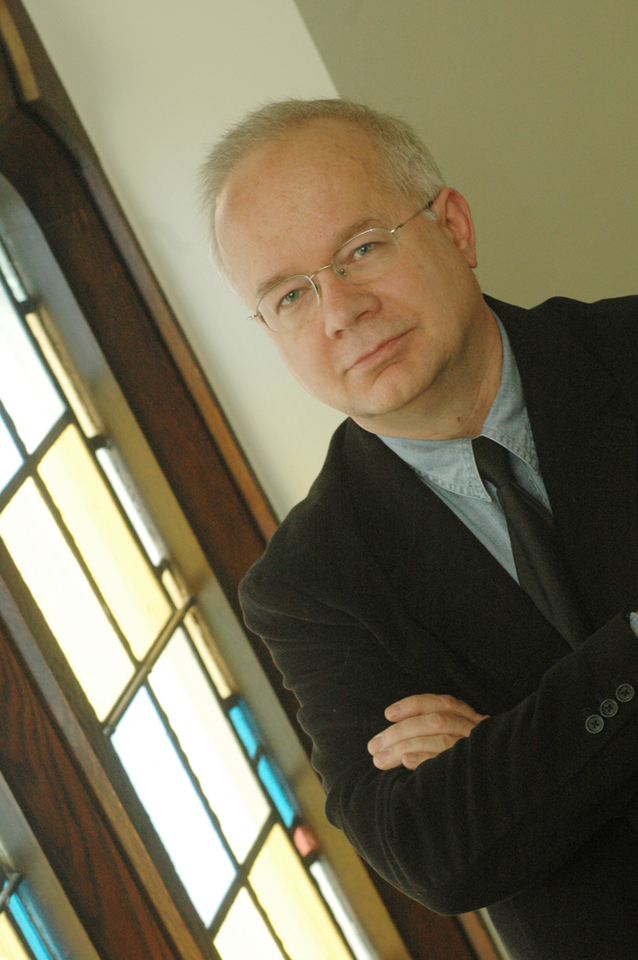Greg Rappleye
"Letter to Frederic Edwin Church at Olana" and "Letter to Bridget Campbell in Tobago" are from a manuscript I am working on concerning the journey of the American painter Martin Johnson Heade to Brazil during the American Civil War. Heade’s project was to paint the hummingbirds of Brazil and to have the paintings printed and bound is a signed limited edition, in the manner of Audubon’s Birds of America. Heade made his hummingbird scenes too complex for the limits of the then-existing printing technology, and his work was viewed as a failure. Today, his hummingbird paintings are his most well-known works, and appear in many private and public collections.
The letter-poem has been a favorite form since my days reading the poems of Richard Hugo. The form seemed a natural vessel for telling Heade’s story—set, as it is, during a time when letter-writing was the primary form of communication.
Regarding the individual poems:
Letter to Professor Louis Agassiz, Posted with the Harbor Pilot, Rio de Janeiro. On April 5, 1864, the day after Martin Johnson Heade left for England, the naturalist Louis Agassiz of Harvard University arrived in Rio de Janeiro leading a scientific expedition which included his wife, Elizabeth Cabot Carey Agassiz, and the philosopher William James. Agassiz had asked Heade to collect 100 hummingbird eggs for him in advance of the expedition. Among the American scientific community, Agassiz was the most well-known critic of Darwin’s theory of natural selection. With his wife, Agassiz wrote A Journey to Brazil (1868).
Letter to Frederic Edwin Church at Olana. Olana is the 250-acre estate on the Hudson River built by the painter Frederic Edwin Church between 1860-1891. The site is now on the National Register of Historic Places and is operated as a public park by the State of New York. Church was a supporter and close friend of Heade, who often rented Church’s space at the 10th Street Studios in Manhattan when Church was at Olana. The lines The infernal serpent; he it was, whose guile / stirred up with envy and revenge... are from John Milton’s Paradise Lost, Book I, lines 34-35.
__________________________________________________________________________________________
Letter to Frederic Edwin Church
at Olana
From the American painter Martin Johnson Heade,
at the 10th Street Studios, Manhattan,
November 30, 1865
Dear Frederic––
To sell a canvas of apple blossoms
swelling from a vase, to sell one of my countless
marsh-and-river scenes (how many hayricks
are there in New Jersey?), these were my tasks.
Having accomplished them at the Union League’s
November show––Christmas presents, no doubt, for
some ambitious lawyer’s wife––I have two months’ rent
and enclose it, with thanks for your patience
and the use of your workspace.
Kensett says a good Hello, also LaFarge. Bret Harte––
have you read his Western stories?––asked of you.
Even old Bierstadt, in his brusque Teutonic yawp, asked
about your health (Beware!) and inquired specifically
of the little place you are building upriver.
The infernal serpent; he it was, whose guile,
stirred up with envy and revenge...
I spend the days at my easel, though the winter light
begins to fail. I rarely go out, take no real
entertainment, though Gifford has a new model
in Studio 4. In late afternoons, it is not unknown
for her to trill away at his piano. Perhaps I will
wander over and join her in a song.
My best to Isabel, and to your young one, too.
Think of me, living this monastic life,
as you gaze upon the Hudson.
In two days’ time, perhaps three,
what touches your shore shall find its way
so very near my door.
Letter to Bridget Campbell
in Tobago
Edward Campbell, Buffalo, New York, April 24, 1946
Dearest––
I stopped in the Finger Lakes and stayed at an inn
which featured roast duck––its skin sizzling; crackled.
Across the road was an estate sale. A woman of Brazilian descent
was selling her grandmother’s belongings––a breakfront, canopied beds,
china, etc. She said her grandmother was a grande senhora who had
come to America in the 1880’s, before they deposed the last emperor
of Brazil.
For $300, I bought a painting of two hummingbirds fighting
beneath a pink orchid. The woman said the artist was
an American–– once a sweetheart of her grandmother––
who’d gone to Rio to paint hummingbirds.
The hummers might look good above the check-in desk, after
we’ve finished remodeling the hotel, or on that sea-foam wall,
guarding the way to the dining room.
Keep the plaster-men at work. I’ll see the bankers, then fly out
on Wednesday. With stops in New York and Kingston, I should
be home––hummingbirds humming––Friday afternoon, latest.
Perhaps, love, before this note reaches your hand.
__________________________________________________________________________________________
 Greg Rappleye’s books include A Path Between Houses (University of Wisconsin Press, 2000) which won the Brittingham Prize and Figured Dark (University of Arkansas Press, 2007) which was first runner-up for the Dorset Prize. He lives near Grand Haven, Michigan.
Greg Rappleye’s books include A Path Between Houses (University of Wisconsin Press, 2000) which won the Brittingham Prize and Figured Dark (University of Arkansas Press, 2007) which was first runner-up for the Dorset Prize. He lives near Grand Haven, Michigan.